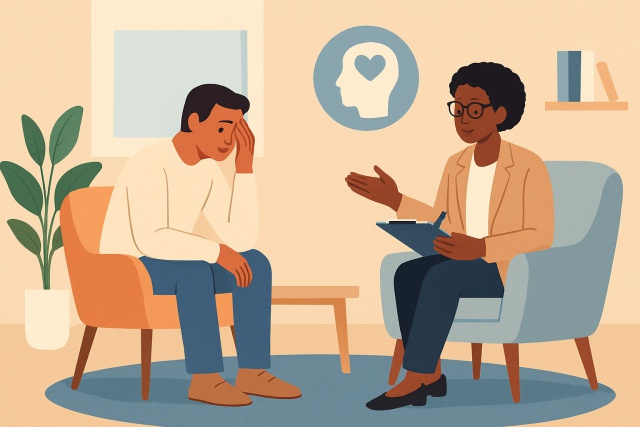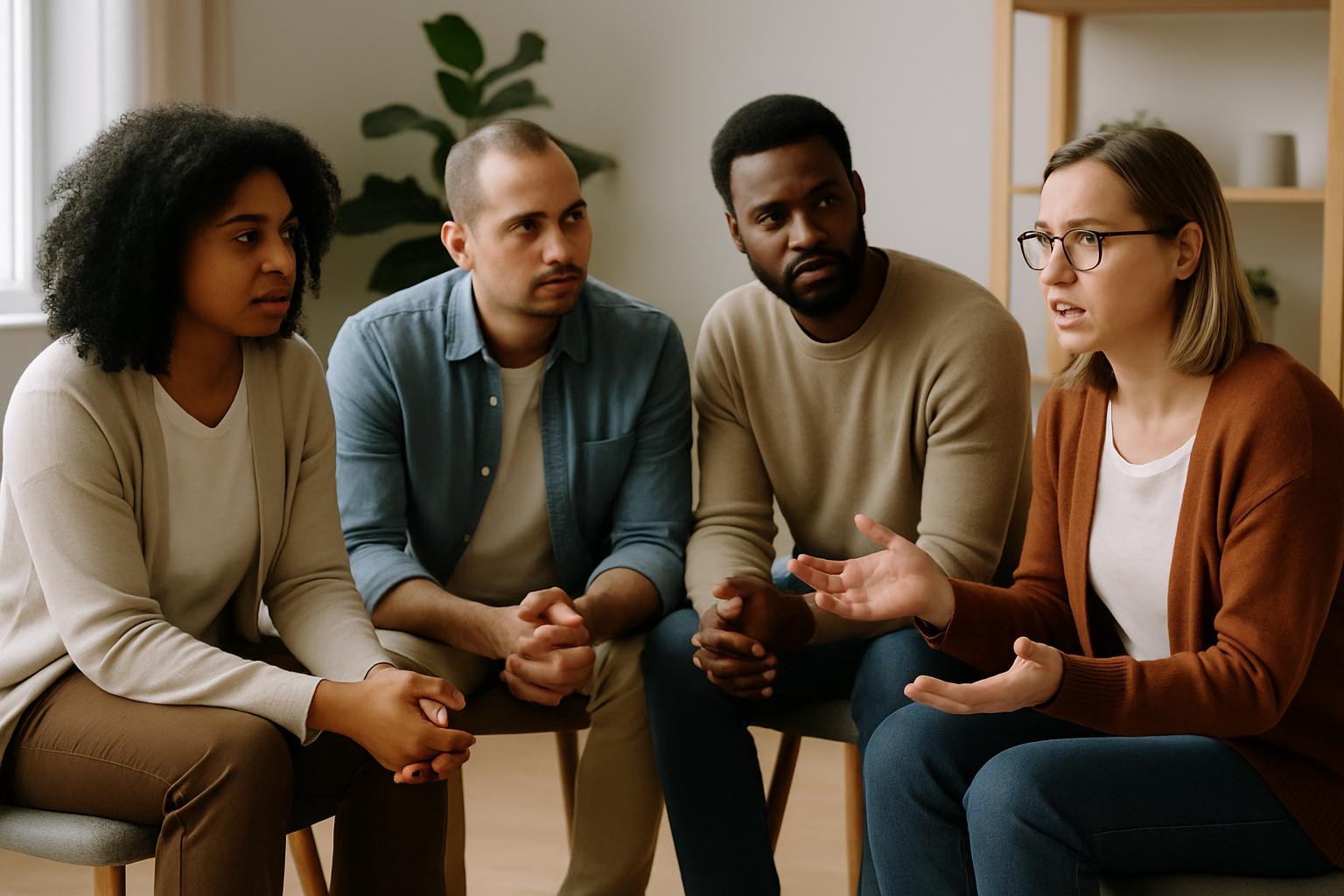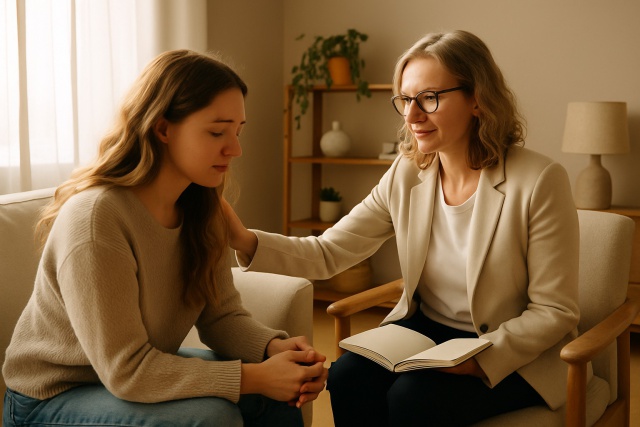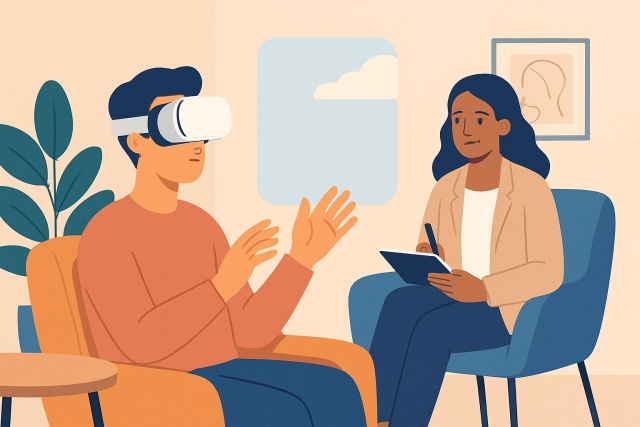
Therapist vs Counselor - What Are The Key Differences
Confused about choosing a therapist or counselor? This article breaks down their key differences acr...
This article dives into how group therapy tackles mental health challenges by blending collective support with tried and true structured techniques.
Group therapy interventions have become a go-to approach in mental health that offers unique perks by harnessing the surprising power of group dynamics. In a structured group setting, people find support from peers and learn valuable lessons from others' experiences. They also build coping skills as they navigate psychological challenges together.
Group therapy brings a handful of people together on a regular basis to tackle mental health challenges, all under the guidance of a trained facilitator who keeps things on track. The therapy interventions are the nuts and bolts—the specific techniques and approaches carefully woven into these sessions.
Sometimes, tackling these challenges together makes all the difference.
Group therapy often proves to be a solid fit for many mental health challenges. It helps with anxiety disorders and depression. It is also effective for post-traumatic stress disorder (PTSD), substance use addictions, social anxiety, and personality disorders.
| Mental Health Issue | Typical Group Therapy Modality | Expected Benefits / Outcomes |
|---|---|---|
| Anxiety Disorders | Cognitive-Behavioral Groups | Noticeably reduced symptoms, sharper coping skills, and smoother anxiety management |
| Depression | Support and Interpersonal Groups | Lifted mood, a lot less feeling alone, and a real boost in social connections |
| PTSD | Trauma-Focused Psychoeducational | Working through trauma, easing those tough symptoms, and finding a sense of being truly heard by peers |
| Substance Use Addictions | Skills Development & Support Groups | Fewer relapses, tougher refusal skills, and a stronger sense of accountability |
| Social Anxiety | Cognitive-Behavioral & Interpersonal | Growing social confidence and noticeably improved communication skills |
When it comes to group therapy, there’s really no one-size-fits-all approach—each style has its own flavor and benefits. Over the years, I have noticed how these various methods can resonate differently depending on the group’s dynamics and individual needs. From more structured formats to those that encourage free-flowing conversation, the beauty lies in finding what clicks. Let’s dive into some of the most common and impactful ways group therapy is done, keeping in mind that what works wonders for one person might feel totally different for another.
Group therapy shows up in all sorts of shapes and sizes, each tailored to hit different therapeutic goals and fit the unique needs of clients. Psychoeducational groups are all about shedding light—sharing knowledge and boosting awareness around mental health topics that might otherwise fly under the radar. Cognitive-behavioral groups dive into structured techniques that gently nudge thought patterns in healthier directions, kind of like giving your brain a little tune-up. Support groups provide a much-needed safe harbor for emotional connection and genuine understanding when life gets rough. Interpersonal process groups roll up their sleeves to unpack relationship dynamics, while skills development groups zero in on building specific coping and social abilities.
Therapy interventions in group settings bring together a mix of helpful techniques like role-playing to practice real-life scenarios. They also include cognitive restructuring to gently challenge unhelpful thoughts, mindfulness exercises that nudge you into the present moment, problem-solving skills to tackle everyday hurdles, and strategies for managing strong emotions when they show up uninvited.
Group therapy leans heavily on social learning and gives participants the chance to spot and pick up helpful behaviors from one another. It also works wonders in making people feel less alone because knowing others wrestle with similar challenges can be comforting. Through mutual support members gradually build resilience and a bit of accountability gently nudges them to stick with their goals.
"Being part of a group has this unique way of jazzing up therapy by creating a shared space where people don’t just witness their own growth but also get to cheer on others. It’s like motivation gets a natural boost and you end up building social support in ways that individual therapy alone rarely offers." — Dr. Elaine Thompson, Clinical Psychologist

Just a few nuggets of wisdom that can really make a difference when you are diving into group therapy. Think of these as your trusty compass to navigate the sometimes choppy waters of group dynamics—nothing overly complicated, but definitely worth bookmarking.
Successful group therapy hinges on thoughtfully selecting participants and setting clear goals. It also requires pinning down a structure and length that work. Highlighting confidentiality is key for keeping trust intact. Facilitators play a vital role here. They guide group dynamics, provide expert support, and tweak interventions as needed to fit the unique vibe of the group.
Navigating the ups and downs of group therapy can feel a bit like herding cats—rewarding but not without its hurdles. Despite its many benefits, group therapy doesn’t come without some bumps in the road and limitations that we need to keep in mind. From the delicate dance of group dynamics to the occasional struggle with individual participation, the challenges can be tricky to manage. But hey, recognizing these limitations upfront is half the battle, and it helps therapists tailor their approach to make the journey smoother for everyone involved.
While group therapy brings valuable benefits, it has its fair share of hurdles like juggling conflicting personalities and keeping everyone genuinely engaged. You also have to be careful about protecting confidentiality. Some individuals might struggle to open up when there are several eyes and ears around.
One PTSD group saw a noticeable dip in symptoms after blending trauma-focused psychoeducation with mindfulness practices. They found a calming thread through the chaos. Meanwhile, an addiction recovery group focused on skills development and accountability managed to push relapse rates way down, much to everyone's relief.
Looking at how group therapy affects patients often means measuring symptom reduction and improvements in daily functioning as well as how satisfied participants feel. It also involves keeping an eye on relapse prevention and seeing how well behavioral changes stick around over time.
Clinicians stepping into the world of group therapy for the first time often find that solid training in group dynamics and targeted therapy interventions is essential. It’s one thing to gather participants but making sure their needs line up just right is another. Putting together clear and thoughtful session plans and handling tricky behaviors when they pop up all help the process run more smoothly.

Confused about choosing a therapist or counselor? This article breaks down their key differences acr...

Discover the vital concept of countertransference in therapy, how it shapes therapist-client dynamic...

Facing fears head-on with immersion therapy can rapidly reduce anxiety symptoms. This guide breaks d...

Not sure what kind of therapist you need? This practical guide breaks down therapy types, helps you...